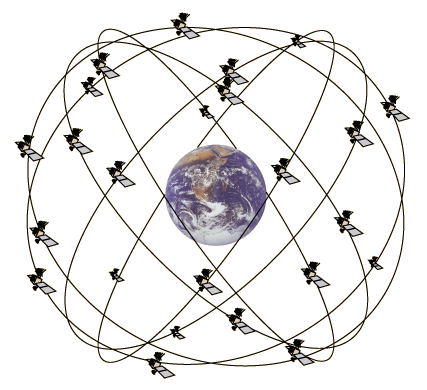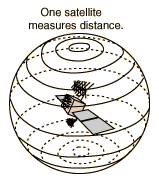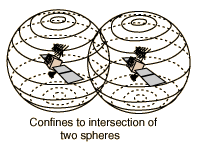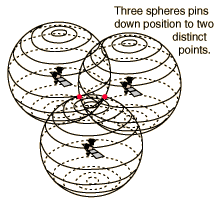Global Positioning Satellites
In June of 1993 the last of the 24 satellites of the Global Positioning System was placed into orbit, completing a satellite network capable providing position data to locate you anywhere on Earth within 30 meters. The satellites carry up to four cesium and rubidium atomic clocks which are periodically updated from a ground station in Colorado. The satellites transmit timing signals and position data. A GPS receiver, which can be a small, hand-held device, decodes the timing signals from several of the satellites, interpreting the arrival times in terms of latitude, longitude, and altitute with an uncertainty which may be as small as 10 meters. In differential mode, accuracies of less than a centimeter can be obtained for distances of hundreds of kilometers. Hand-held units read out longitude and latitude to a thousandth of an arcminute and change in the last decimal place in a couple of paces while walking. The satellites are in orbits much lower than the syncom satellites, orbiting around 17.7 million meters (11000 mi) above the earth, with orbit periods on the order of 10 hours.
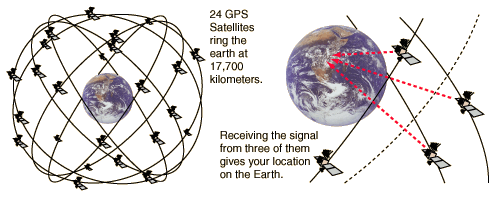
From aircraft and ship navigation to finding the favorite fishing hole on the lake, the applications of GPS have multiplied rapidly.
| Agricultural applications of GPS |
Orbit concepts
Reference
| HyperPhysics***** Mechanics | R Nave |

